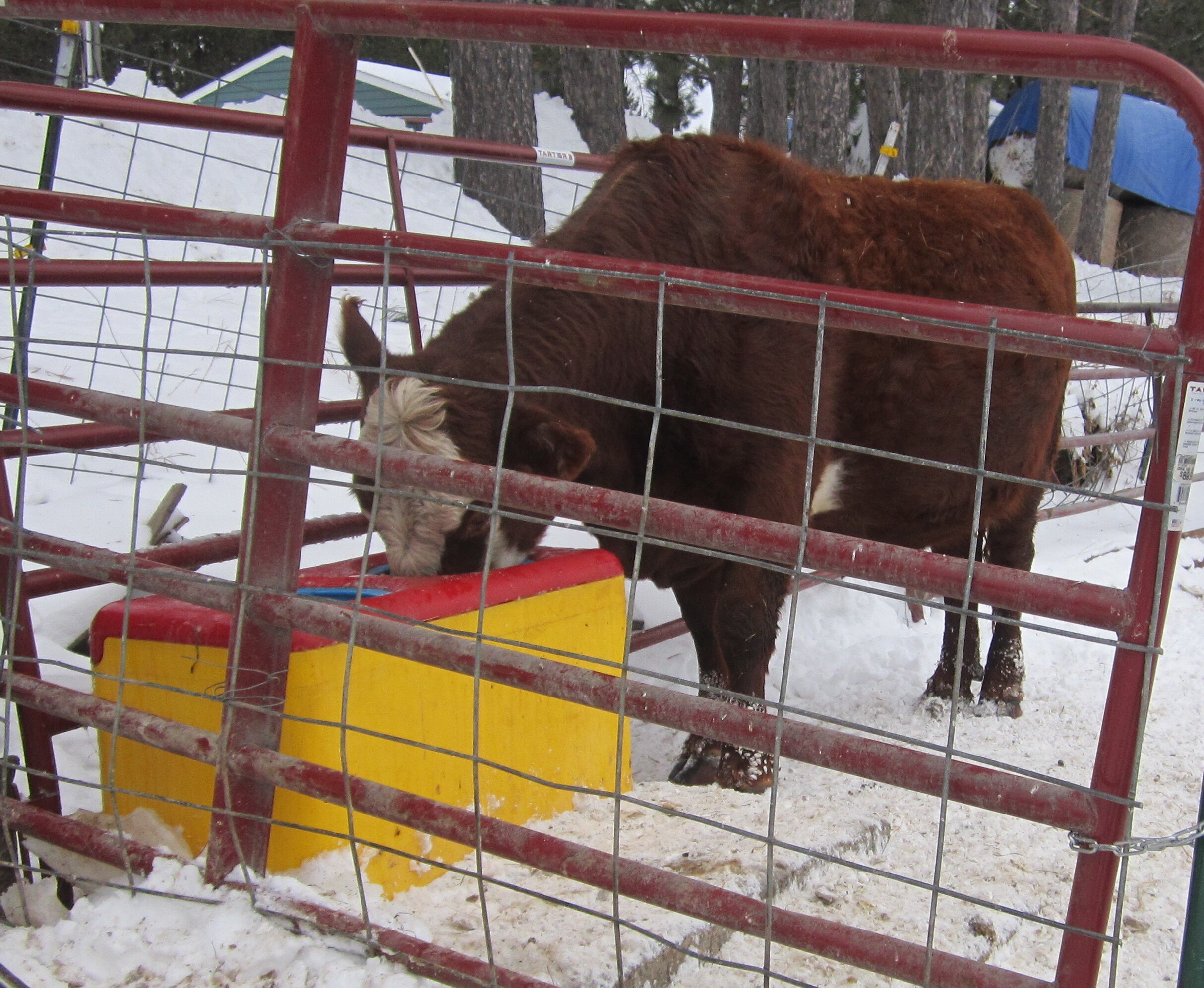Farmers market season is here! The Grand Rapids and Aitkin Farmers Markets are already open and the other six area markets will open soon. They’re located in city parks and parking lots and empty lots and wherever they can find space to use, preferably without cost. Most farmers markets up north are run by volunteers or vendors who double as managers. Any joining fees that markets charge vendors are used for advertising or space rental. So the profit generated at a farmers market goes directly to the farmers and other vendors who sell there. Most markets around here have guidelines that limit vendors to those who make/grow/produce their goods within a certain number of miles of the market. That means that the dollars you spend at a farmers market stay local and support the local economy.
Farmers markets are a tiny slice of food sales when you look at all food dollars spent. But they are one of the ways that customers can buy directly from local farmers. That means that you can ask the farmer how the food was produced—is this beef from grass fed cows, or are your pigs pastured, or do you use pesticides on your tomatoes, or how much sugar does your strawberry jam contain? There’s something comforting about knowing where your food comes from and how it was made or grown. There are also limitations—and seasonality is the main one in the northland. I manage the Virginia Market Square Farmers Market and we always have someone who comes at the beginning of June asking when we’ll have tomatoes and sweetcorn. That means that farmers markets have to be educators too. If you want to eat fresh and local, you’ll be eating asparagus, rhubarb, chives, lettuce, spinach and some herbs in June, but that sweetcorn and those tomatoes don’t ripen until at least late July or August. Zucchini you can get in early August, but winter squash like butternut or Hubbard won’t be ready until late September at least. And pumpkins are ready just in time for Halloween.
Many of our area markets accept SNAP/EBT payments and FMNP checks. SNAP stands for Supplemental Nutrition Assistance Program and FMNP stands for Farmers Market Nutrition Program. Both are funded by the USDA and are part of the Farm Bill. Most markets also participate in “Market Bucks,” a matching program funded by the Minnesota Legislature and administered by Minnesota Hunger Solutions. Each of these programs aims to increase the purchase of fresh local food at farmers markets by recipients. In all cases, the market vendors reap the benefits in the amount they’re able to sell. For the past several years, some area markets have offered the Power of Produce Club for kids. Each child gets $2 worth of tokens to spend on veggies or fruit at the market. And this year, several markets will pilot the Power of Produce Plus program for seniors.
Each market is unique in its mix of vendors. Some include craft vendors as well as food. Before COVID, many markets offered children’s activities and entertainment. And we hope that can return sometime this summer! Markets operate under the jurisdiction of the Minnesota Department of Agriculture and are considered part of the food service sector. So we follow their rules. The Minnesota Department of Health is also involved in the licensing of vendors who sell “value-added” products which add ingredients not grown on the farm. And then there are all the Cottage Food producers who make jams, jellies and pickles and other foods that the Department of Agriculture considers “non-potentially hazardous” because of their acid and water content.
Here are the area markets and opening dates, in order of opening:
Grand Rapids May 5, Aitkin May 8, Ely June 1, Virginia June 10, Hibbing June 15, Tower June 18, Cook June 19, and the Mesabi East Environmental Education pop-up market opens July 31. You can look up the days and hours that each market is open, the location, and whether they accept SNAP/FMNP in the farmers market directory at www.arrowheadgrown.org . The markets are listed by region and the directory covers northeast Minnesota. We’re working on adding a page to this website that gives the approximate month in which common vegetables and fruits are available in our northern climate…..coming soon!
A new feature for some markets is online ordering. For example, the Grand Rapids market vendors list their products on the Open Food Network, an international open-source platform, so that customers can shop from home and pick up their order at the market. Here’s a link to their online “store” as an example: https://openfoodnetwork.net/grand-rapids-farmers-market/shop#/shop . Last year because of COVID, the Cook Area Farmers Market conducted all of their sales via online ordering and pick up at the park with no live market. This year they’ll be back with an in-person market at the park. Some, like Virginia Market Square, use a combination of online and in-person sales. For growers who work full time at off-farm jobs, online ordering provides a way to sell their produce without actually sitting at the farmers market. It’s also a good way for markets to increase the products they have available.
In Minnesota, many markets are members of the Minnesota Farmers Market Association which provides insurance as well as marketing assistance, a farmers market manager guide, and an annual educational conference as well as weekly Zoom updates. (www.mfma.org ) Many markets also join Minnesota Grown which publishes a statewide directory of producers and markets who sell directly to customers. ( https://minnesotagrown.com/search-directory/ ) And the national Farmers Market Coalition keeps everyone up with all of the federal legislation and relevant programs. (https://farmersmarketcoalition.org/ )
So check out the Arrowhead Grown directory and plan to visit your local farmers market as soon as it opens! Thank you from all of the local growers and vendors who look forward to meeting you soon.















































































